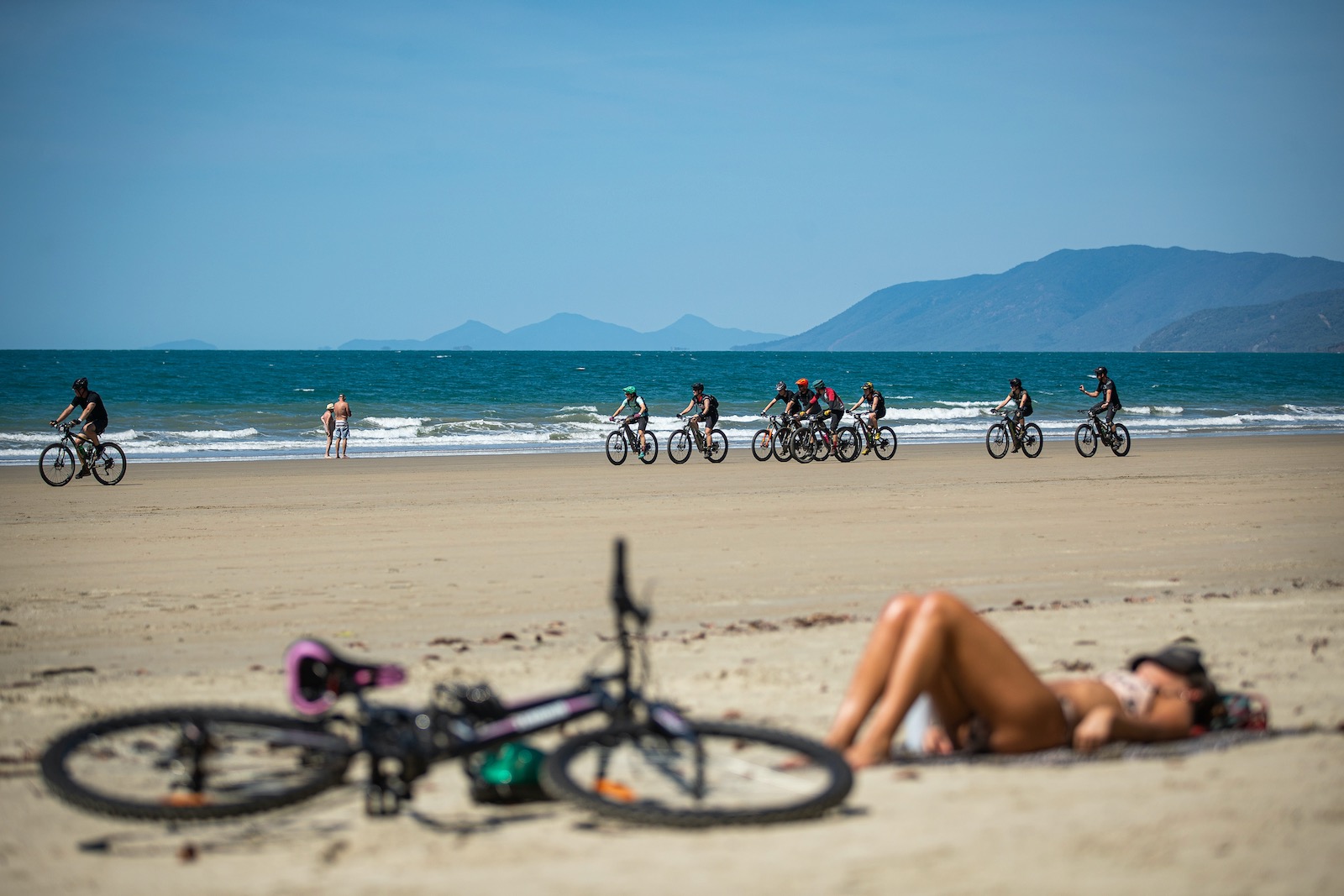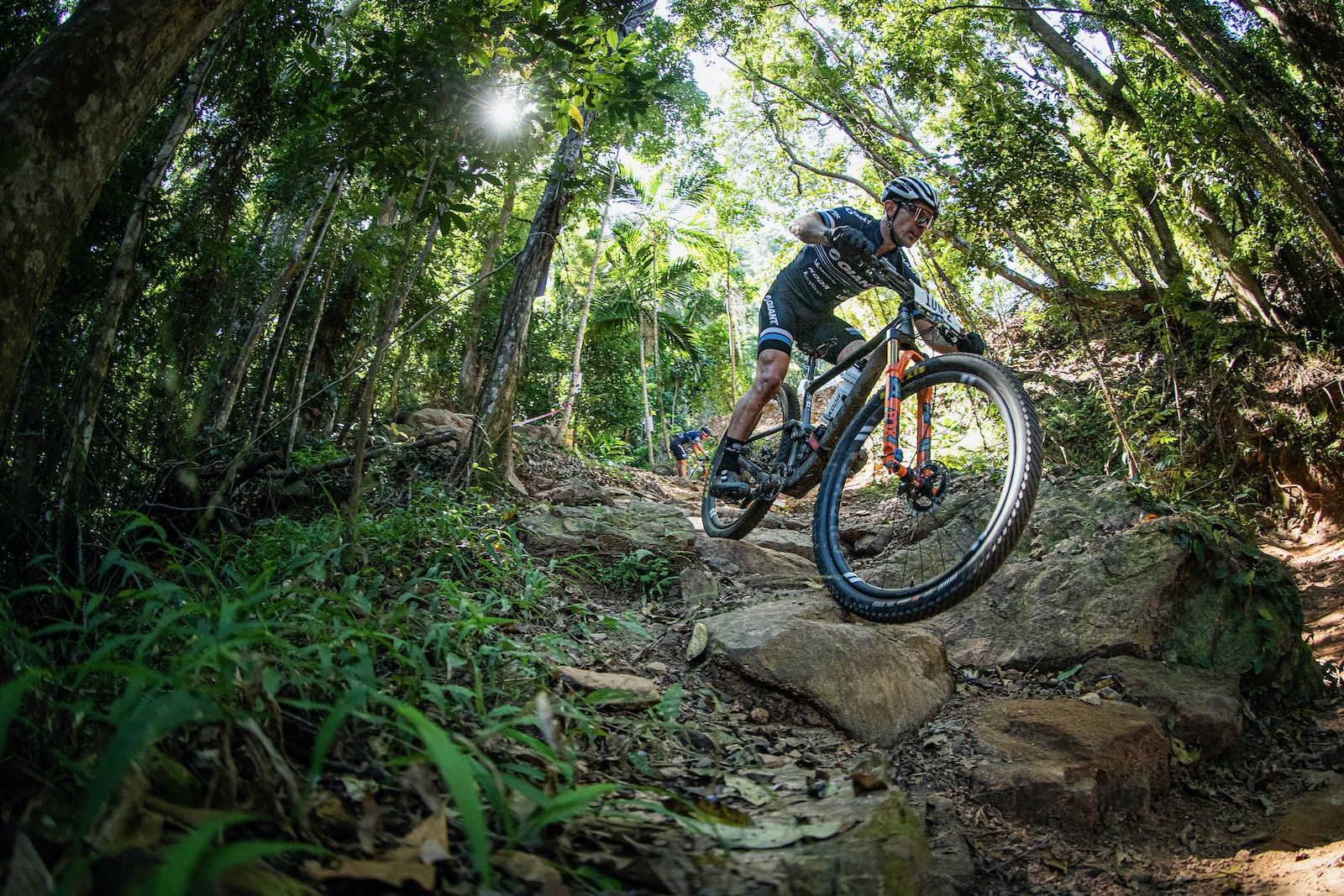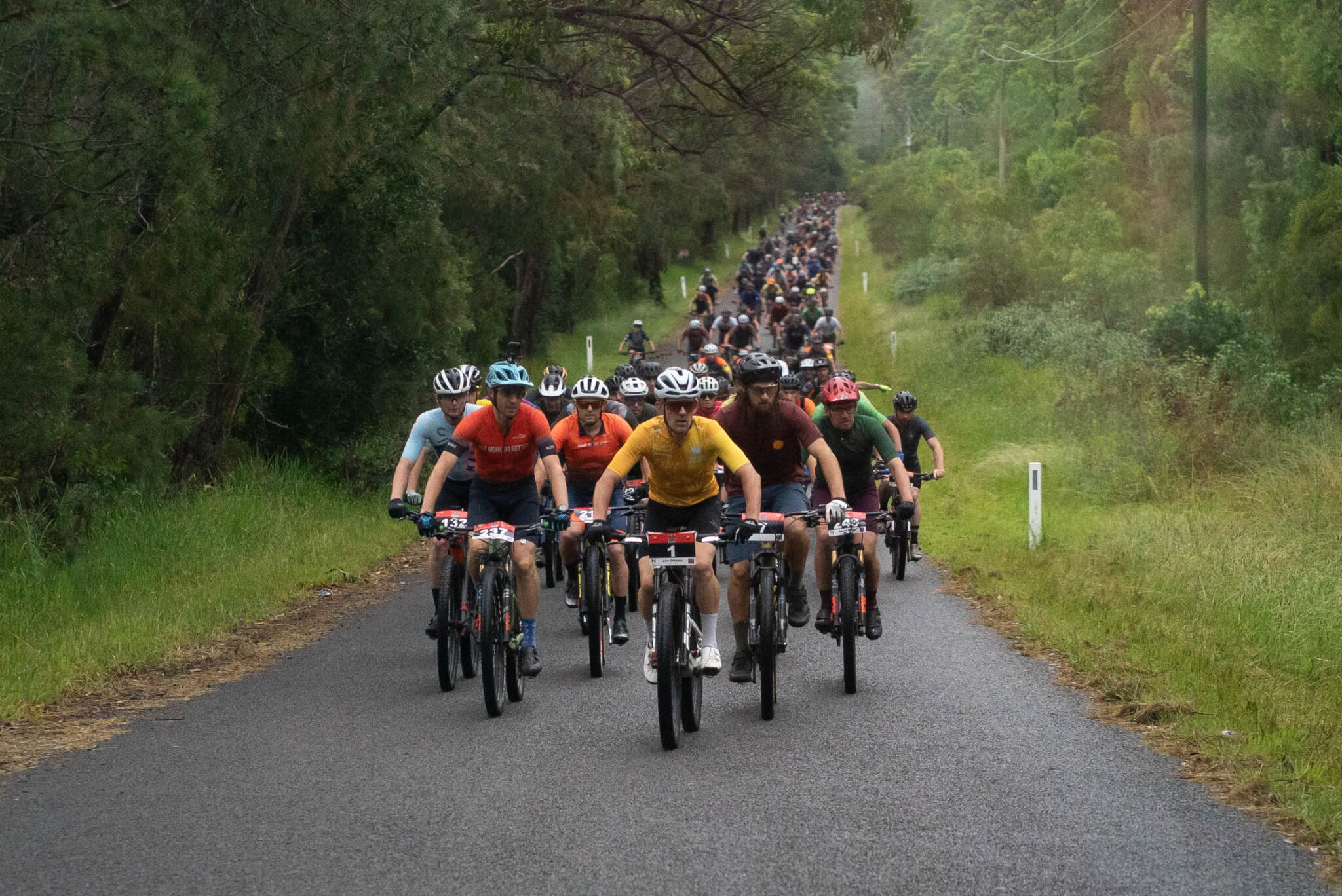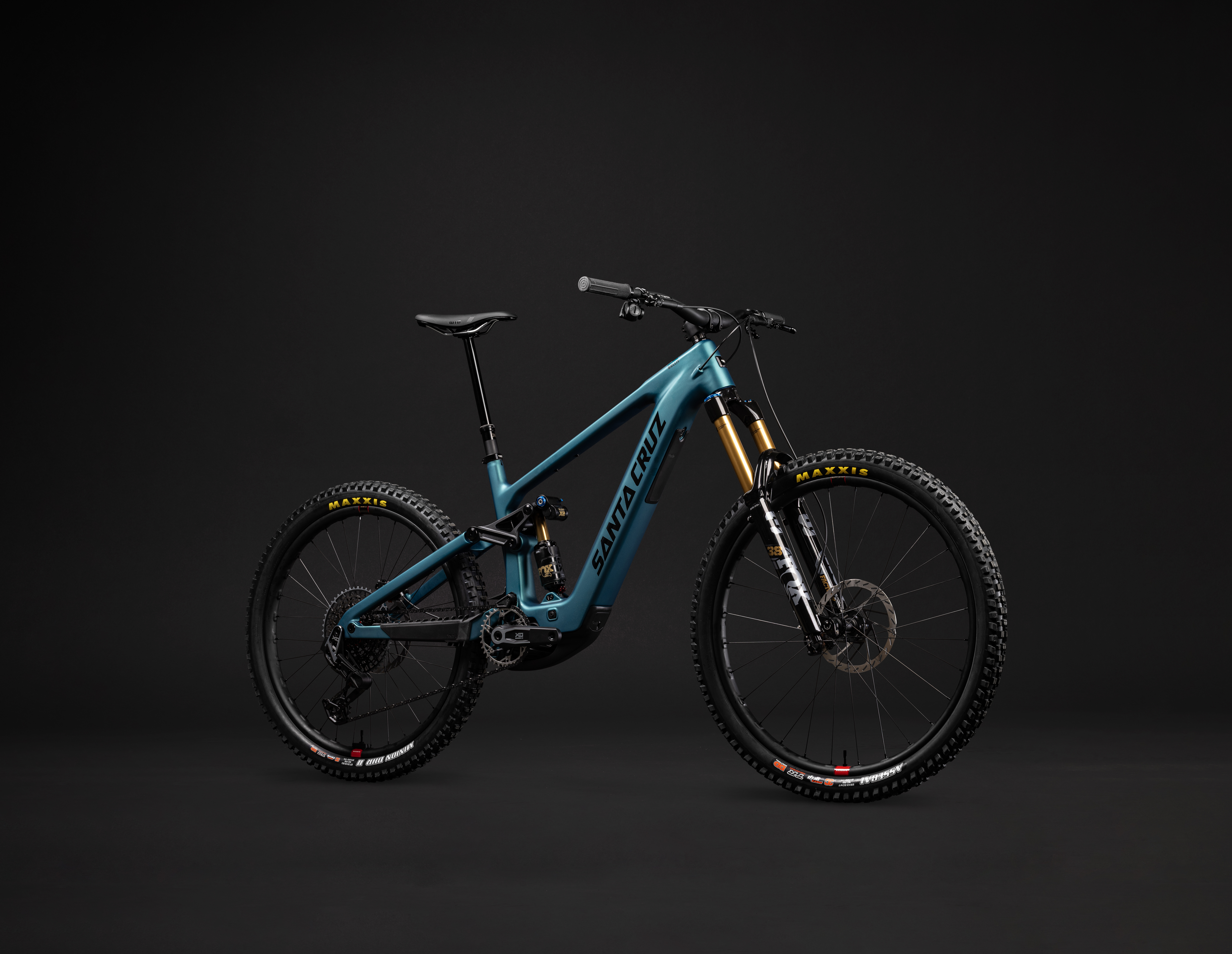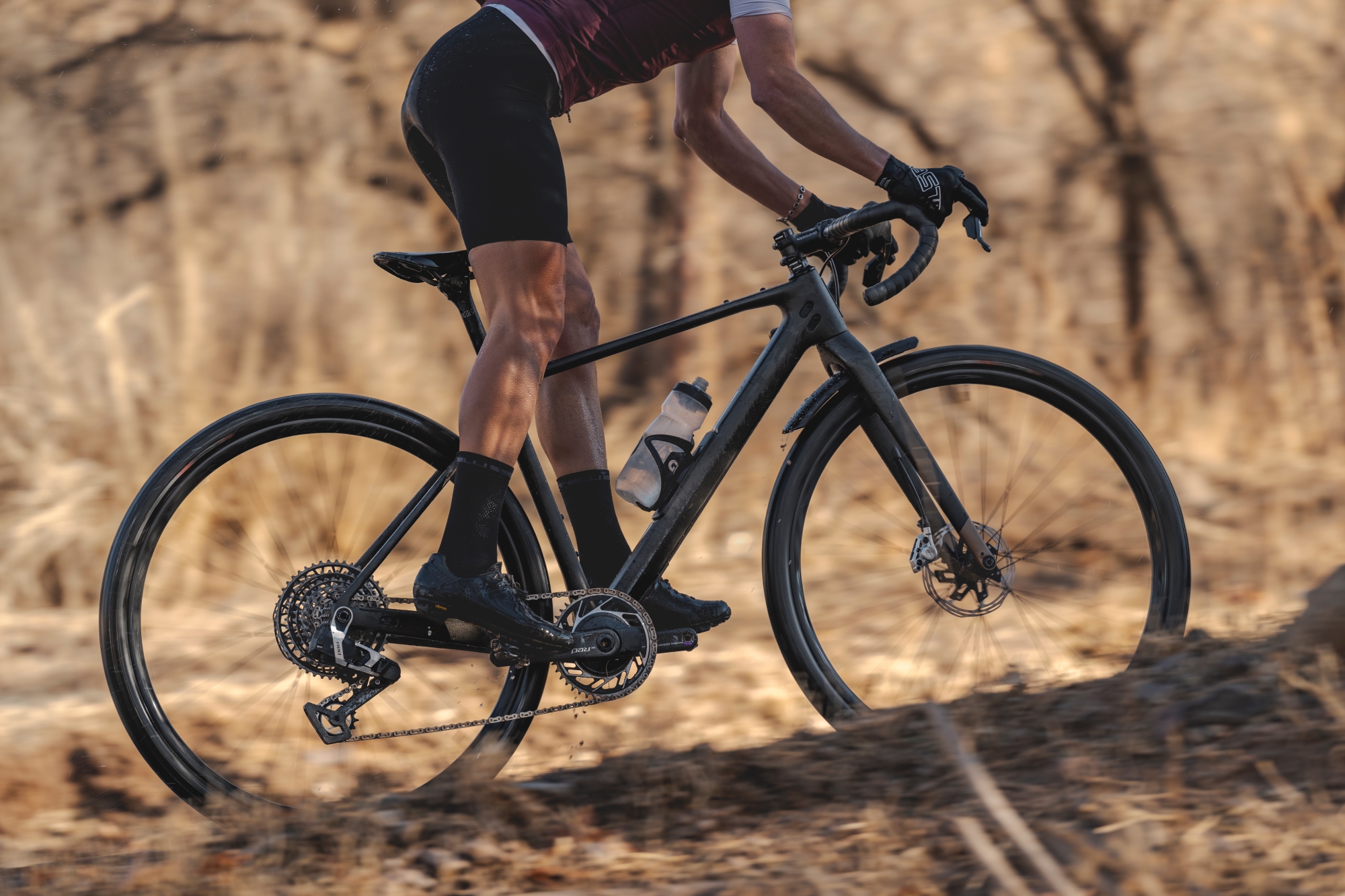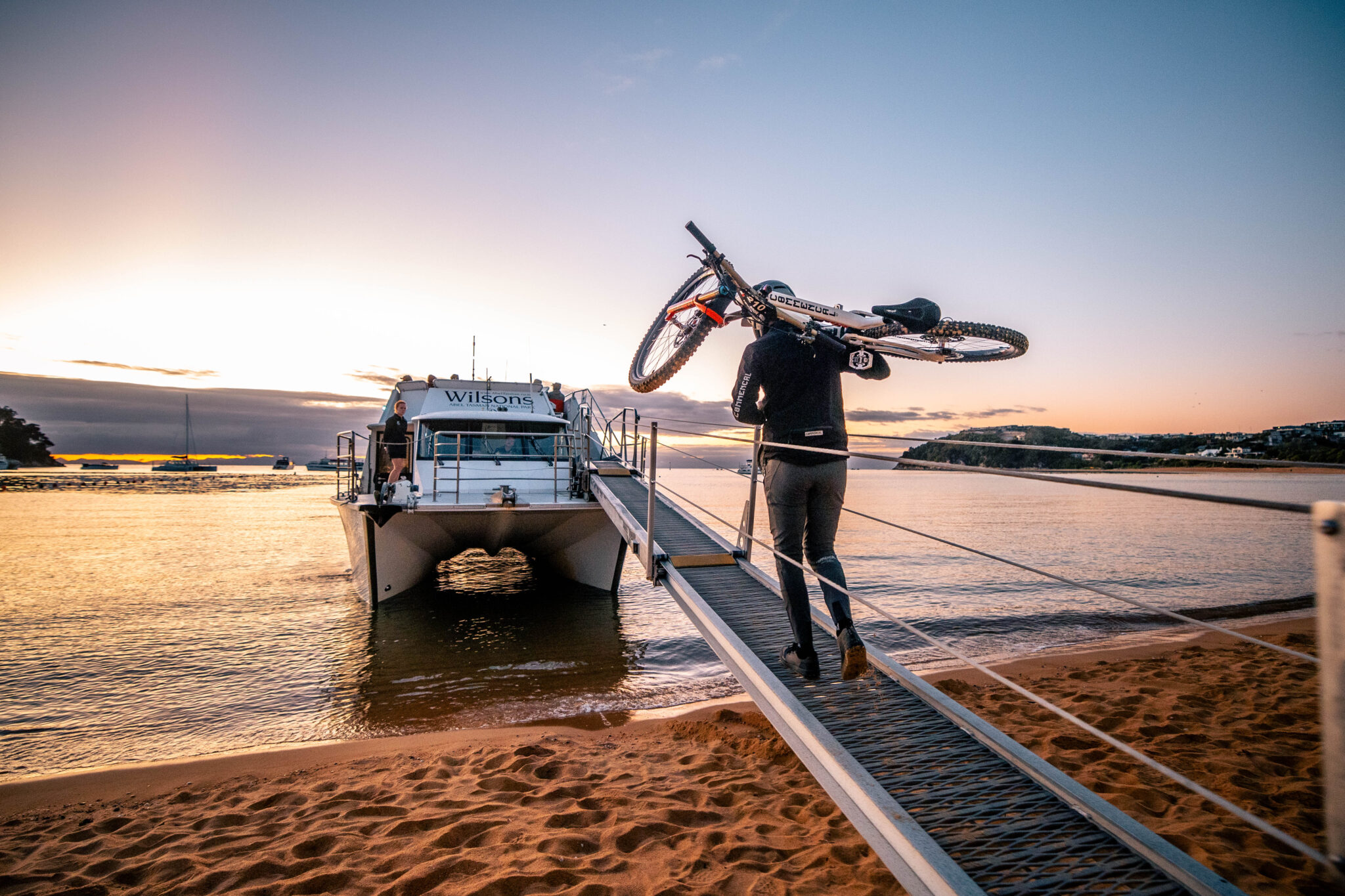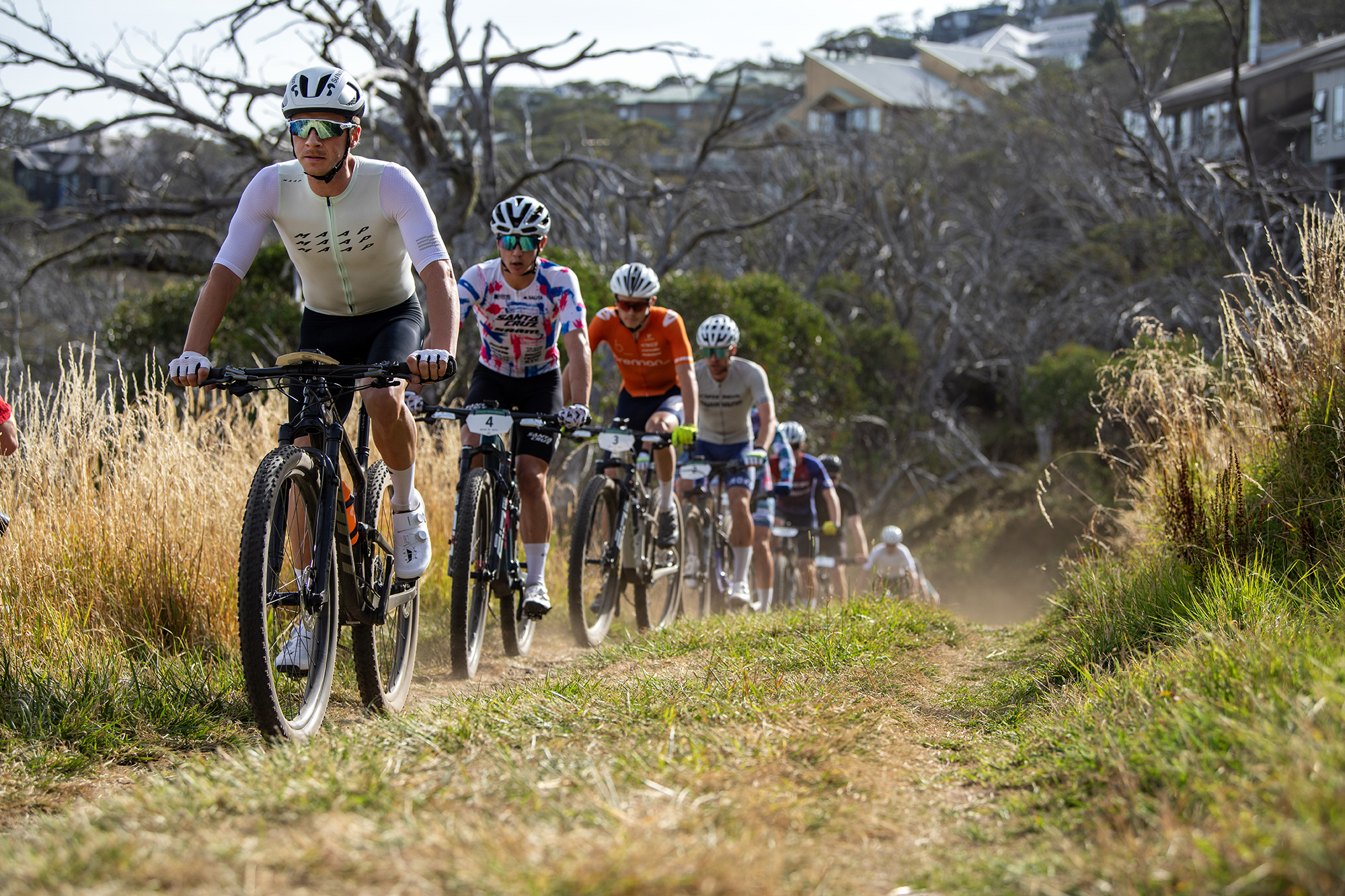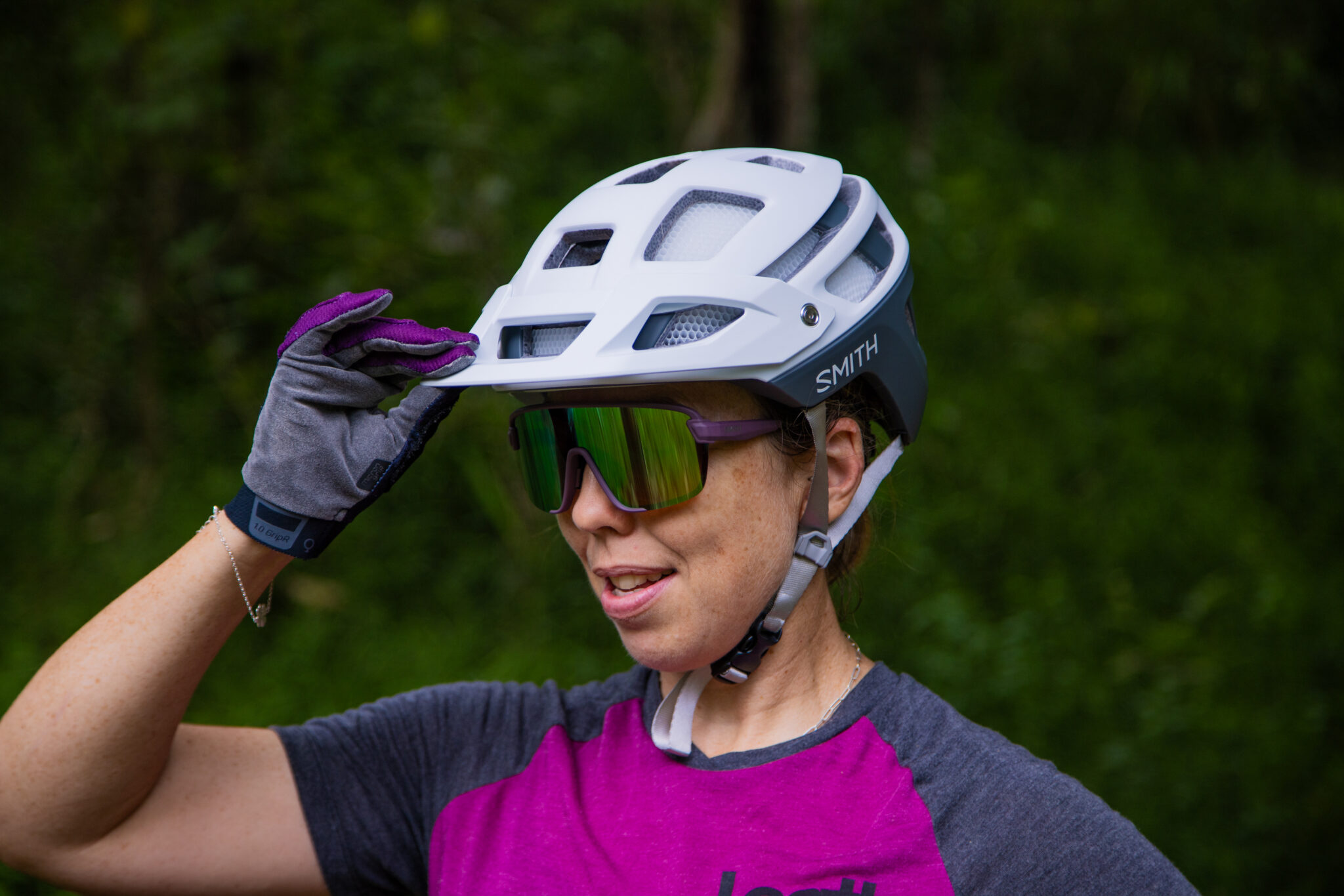7 steps to make Reef to Reef an easy MTB holiday in Queensland
Reef to Reef isn't just a 4-day mountain bike event - it's the foundation of a tropical MTB holiday!
Reef to Reef was a popular new event when it landed in Tropical North Queensland in 2018. It built on the history of the iconic one-day RRR mountain bike event (Rural, Rainforest, Reef) but turned that race experience into a 4-day mountain bike event, matching Port to Port and Cape to Cape – sister events of the new event in Queensland.
Based in Tropical North Queensland, Reef to Reef sits in an area steeped in mountain bike history. Cairns has hosted several mountain bike World Cups, and two editions of the UCI Mountain Bike World Championships. And in 2022, it will also be the first tropical location in the Crankworx World Tour. While a lot of that action is all based around Smithfield MTB Park, the mountain biking in the greater area extends far beyond this popular location. And as such, so do the stages of Reef to Reef.
Reef to Reef visits Smithfield for the prologue on stage 1, before heading up the range to Davies Creek for Stage 2, and then onto Mount Molloy for Stage 3. Both these stages are stop the range. Davies Creek is dry and flowy, while Mt Molloy is a real mix of cattle country, old forestry roads in the rainforest, and old school singletrack. Stage 4 is pretty special, as after a loop up near Mt Molloy, you hit the iconic Bump Track, dropping down to the coast on a descent not unlike a mine shaft! A final blast up the beach takes you to the surf club at Port Douglas – the perfect race finish.
It may all seem a bit daunting with travel and four different locations, but here are our tips to make sure Reef to Reef is an awesome mountain bike holiday.
1. Understand the stages
Reef to Reef has 4 days, with 4 different stages. And best of all – they're all a bit different!
Head to the event site to take a closer look at the course details.
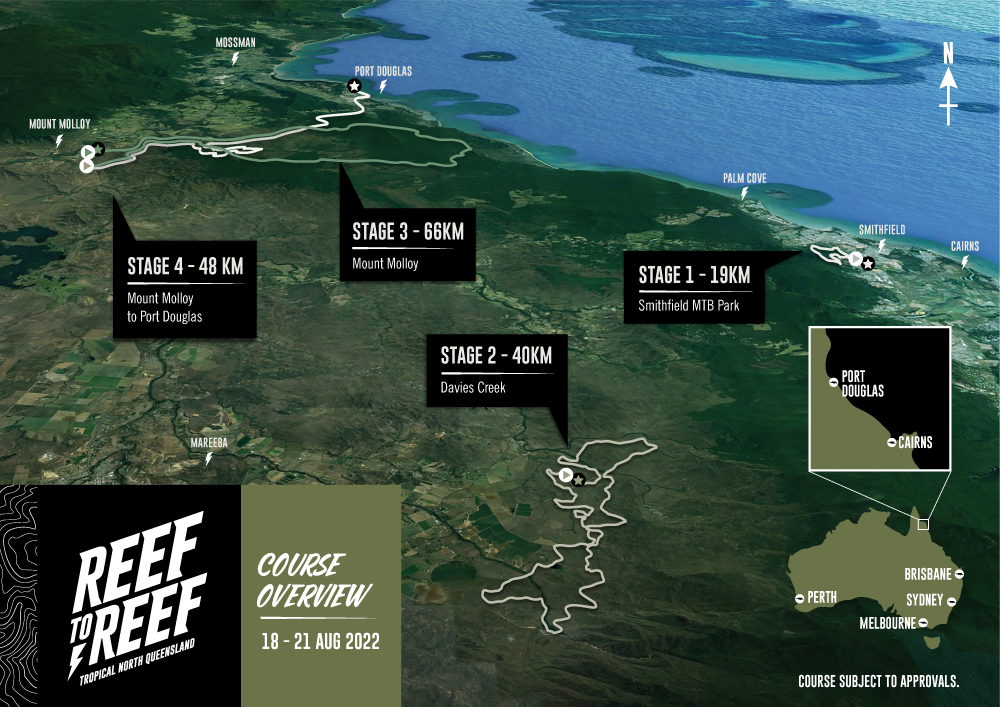
Stage 1 – Smithfield MTB Park | 19km
This stage kicks off after lunch, which should allow you to make the trip from somewhere else – or take a squizz at the course if you came in on Wednesday. This stage has lots of singletrack, so it is raced as a time trial to reduce course traffic.
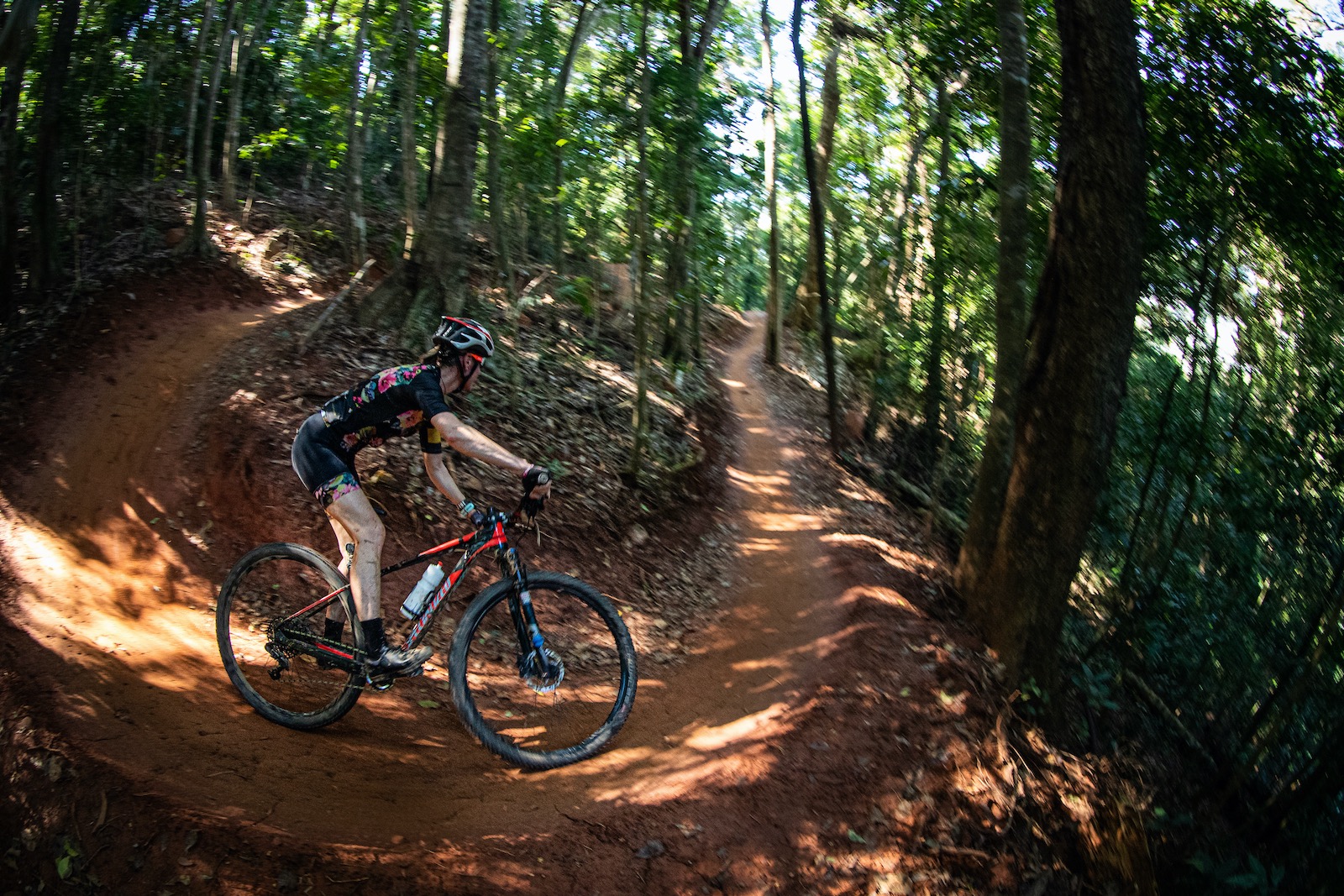
Take it as you want, but you are going against the clock. If you want to have a top result, you'll need to bring your A game. Not so fussed? Manage the singletrack climbs, and own the singletrack descents!
Stage 2 – Davies Creek | 40km
Welcome to the Dry Tropics! This stage takes place atop the Great Dividing Range, about a 40 minute drive from Smithfield – but it could be a world away. The drive to Davies Creek is a scenic road up the range and through World Heritage listed rainforest. As you drop over the other side, you enter the dry tropics as you approach Mareeba. Its a land of fertile soil, agriculture and irrigated crops. At this point you should be happy you're not racing the Crocodile Trophy, which ascends the range via Coperlade Dam, before descending to Davies Creek.
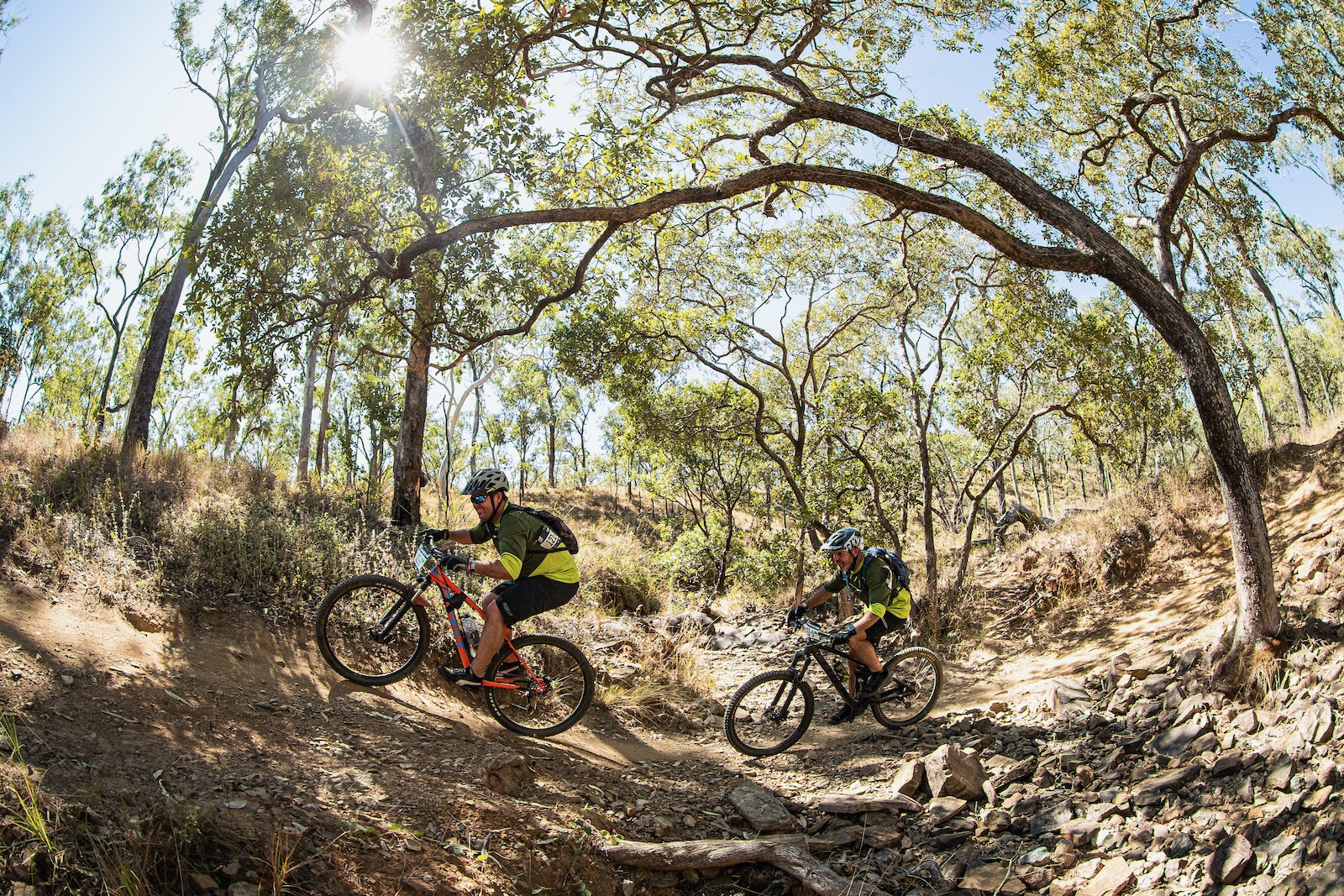
Instead, Reef to Reef takes on a big circuit, under the trees, along the edge of cattle country, and through the grasslands. Expect loose over hardpack, big drifting turns, and some open trails to really chase down those in front of you.
Stage 3 – Mount Molloy | 66km
This is the longest stage of Reef to Reef, but it's a cracker! Mt Molloy is about 40 minutes from Davies Creek, or about 70 minutes from Smithfield. The town is small, with a pub and a corner store and a few classic Queenslanders (people and buildings). The race takes off through the surrounding farmland, and takes in some trails that swoop through the open bushland.
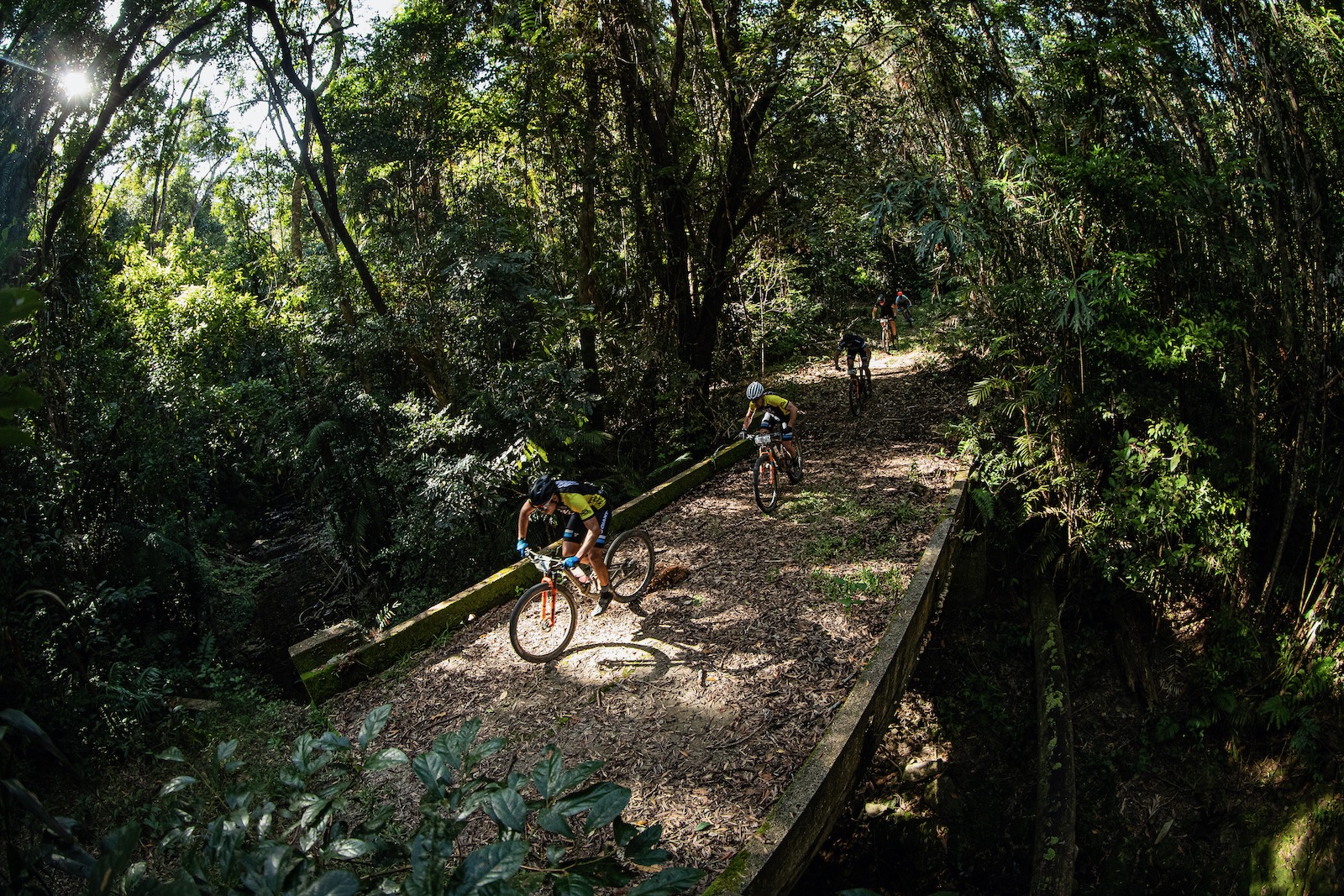
Farmland pushes right up to the rainforest, and the course dips in and out before taking the plunge into old forestry roads. Expect bridges, dappled light – and jungle. You'll have to look at your Strava map later to see just how close this route takes you to the coast – you're just still about 500m above it.
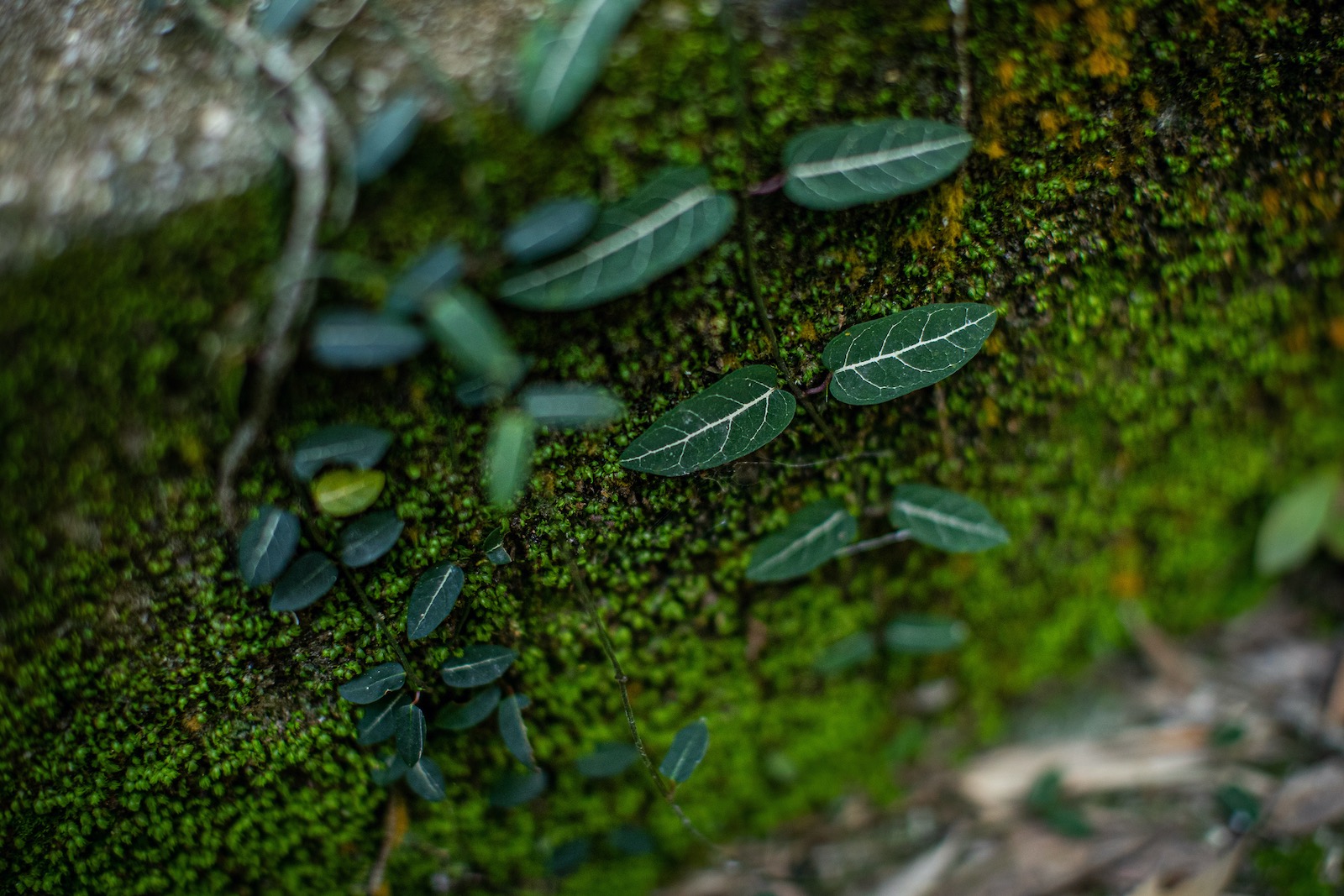
Stage 4 – Mt Molloy to Port Douglas | 48km
This is the only point to point stage, and Reef to Reef do have shuttles organised to help with the logistics. Otherwise the race start is about a 40 minute drive from the race finish.
While the Bump Track takes pride of place as the stand out feature of this stage, there's more terrain to cover up on the plateau before pointing down. The Bump Track cuts a line through dense jungle, rolling along on a well worn line of trail, before a sharp descent into a creek. If you can master that entry and exit you're doing well. Soon after you'll climb atop a rise before things head down. Fast.
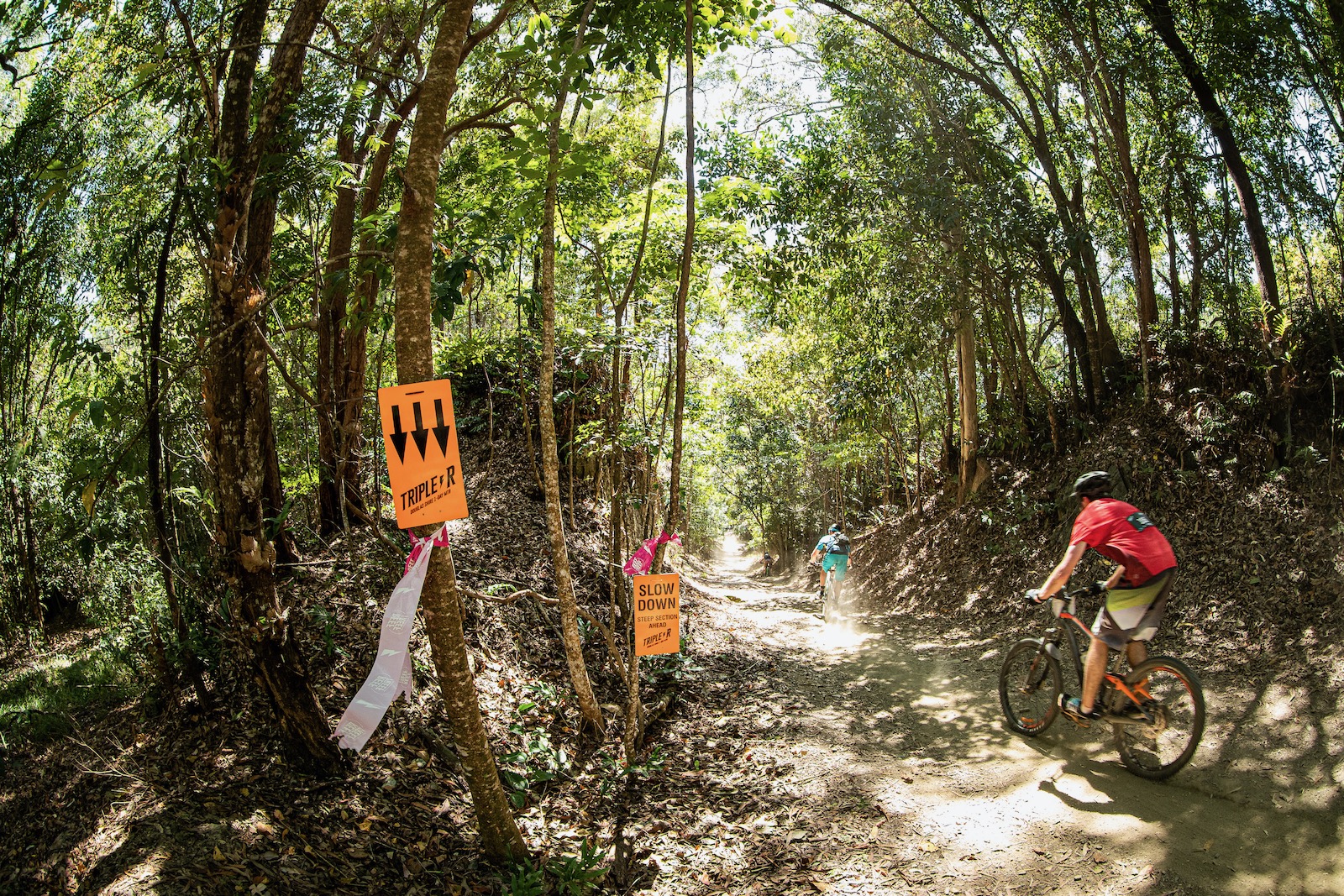
Hold on and check your exit, as you burst into some rural lots. The copurse zigs and then zags through some country roads, cane fields and then the back streets of Port Douglas before landing on the beach. Light the afterburners as the finish is close(ish)!
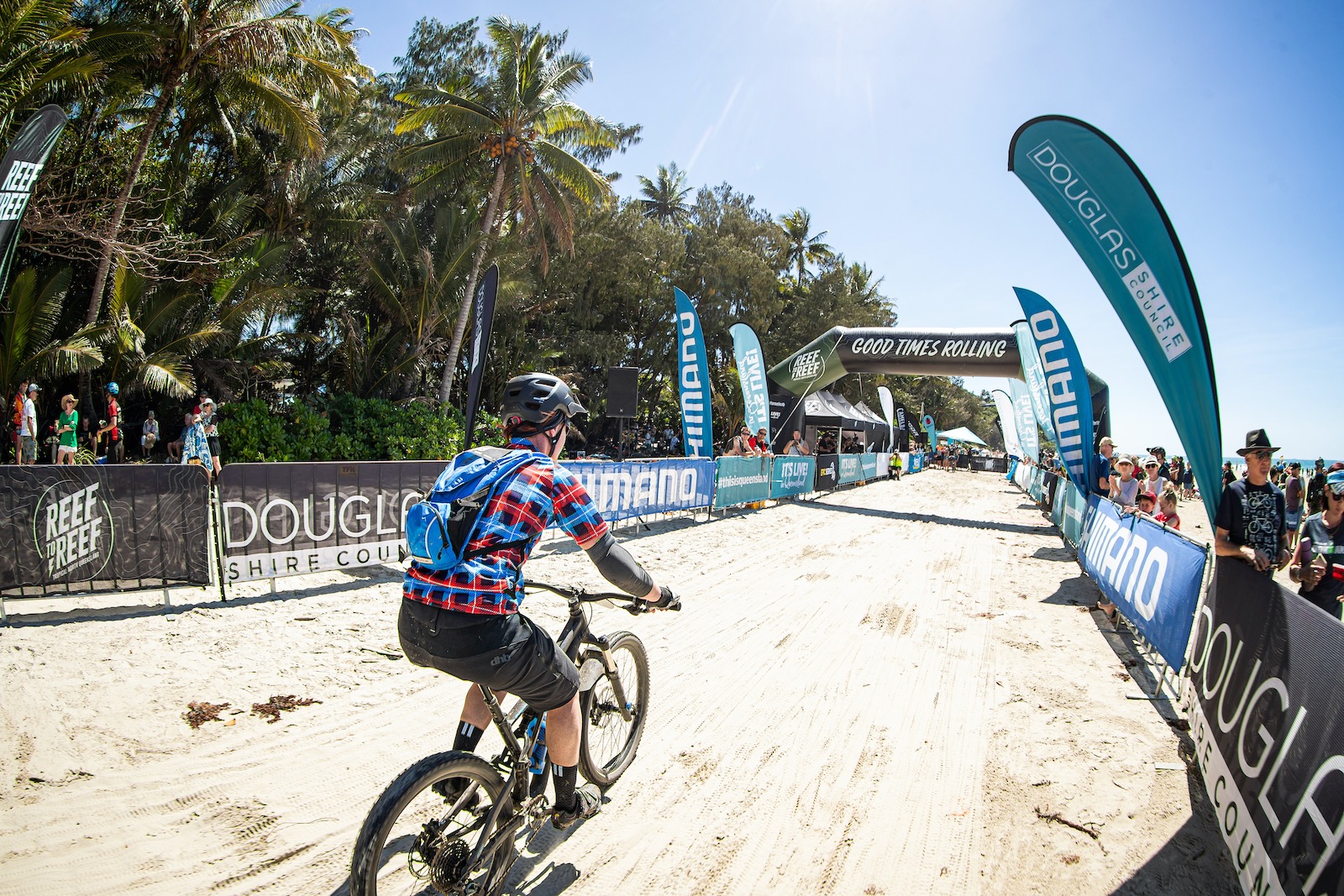
That's it. There are climbs, there are iconic descents. You ride through the rainforest, in a rural setting, and to the reef. The Reef to Reef really offers some of the most varied terrain of any mountain bike event in Australia.
2. Mates and dates
Reef to Reef, like all Epic Series events, can be raced in pairs. Race solo if you want, but the pairs racing is where the fun is, sharing the experience on and off the bike with buddies, or your life partner.
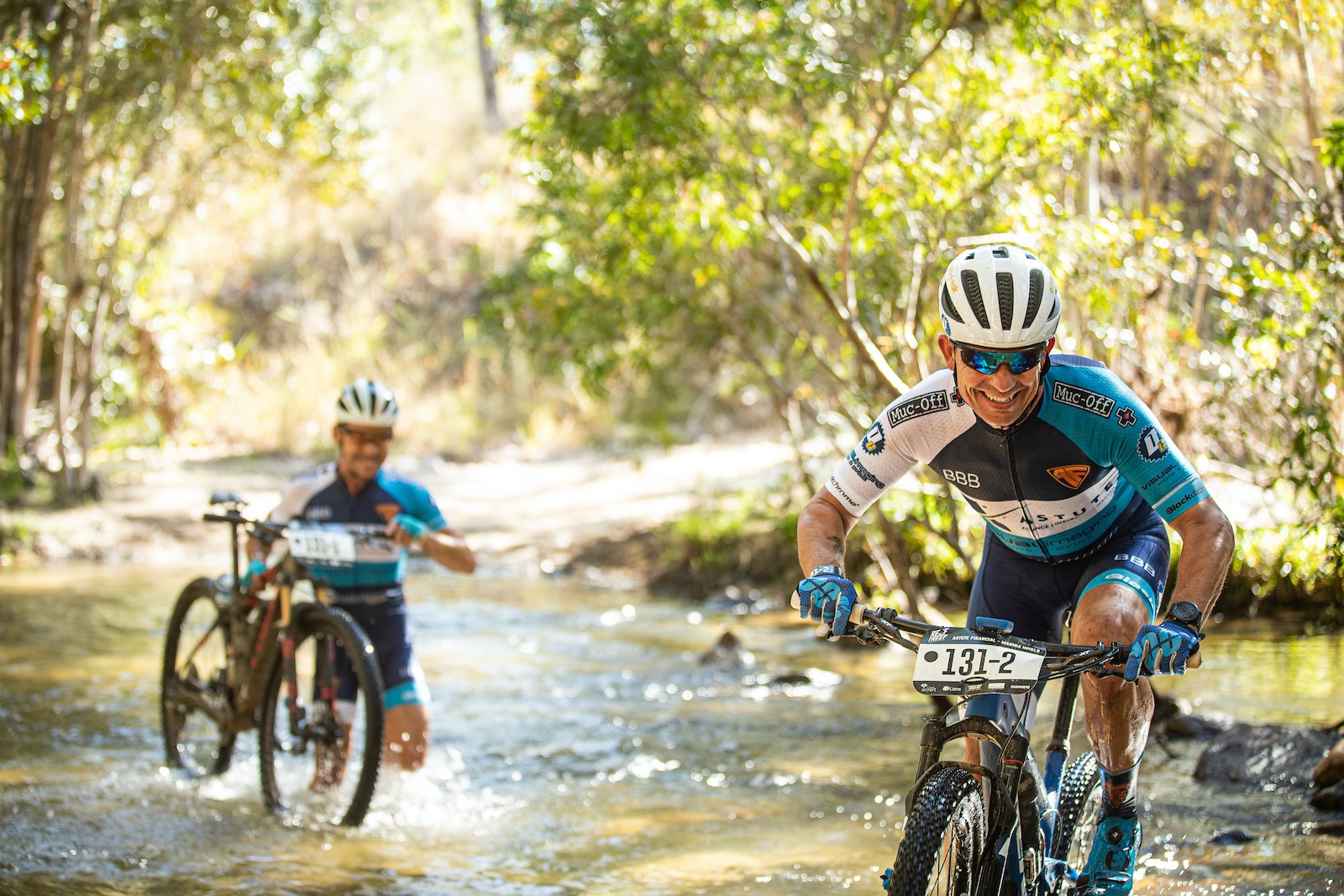
So lock in the dates for the event now – send a calendar invite to mates you want to race with, or a crew that you think you should travel up to Reef to Reef with. The event runs from August 18-21, and it would be smart to arrive in Cairns on August 17, and either fly out late on the 21st or enjoy an after party and get on a plane on Monday 22nd August.
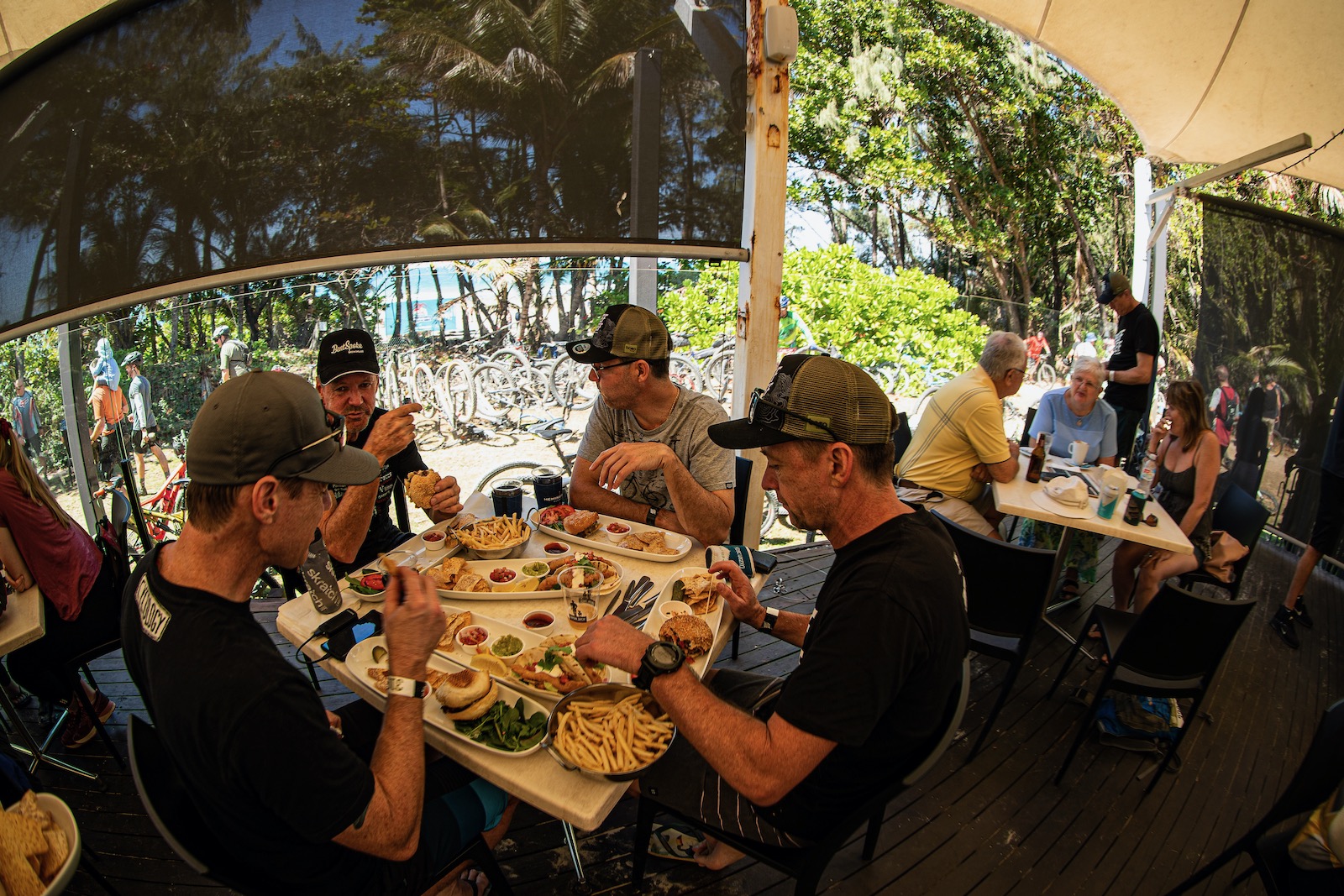
3. Lock in your travel
So you've got your crew, and you have entered Reef to Reef. Now it's time to get there!
If you're driving from anywhere in northern Queensland, you'll be familiar with driving times to Cairns and surrounds.
If you're flying, Cairns is the target airport. You'll be best placed to get onto a flight comparison site like Skyscanner, or see what offers somewhere like Flight Centre have. Of course, booking direct with Qantas, Jetstar or Virgin Australia is also easy. Jetstar are fine with bikes, but you do need to book for the right amount of weight, and add it on as a sports item. So this fare does add up a little.

You could even check places like lastminute.com.au for package deals for flight and accommodation – although you may wish to stay in two places. The drive times from somewhere around Palm Cove are pretty good. 10 minutes for Stage 1, Maybe 50 for Stage 2, 70 minutes for Stage 3 and about an hour (or less if you use the shuttle) for Stage 4.
But let's look at that now.
4. Book your accommodation
So, what sort of place do you want to stay?
This is your call. There's a bunch of backpackers and holiday park accommodation around Cairns. Cool Waters Holiday Park has always served us well on AMB trips to the tropical north, being halfway between Cairns and Smithfield.
If you want to stay in one spot, Palm Cove is probably the pick. There are lots of options, you're on the beach, and it's the most central. You might get an apartment for as little as $500!
Alternatively, do Thursday, or Wednesday and Thursday nights somewhere just north of Cairns, for easy access to Smithfield. You'll need to drive up the range on Friday morning, so book a place in Mareeba for Friday night. A single night will be around $200 – it's a trucking route. Wioth no real accommodation in Mt Molloy, the best plan here would be to drive via Mt Molloy to Port Douglas after the Davies Creek stage – and stay there until Monday. This starts at around $520 for 2 people for 3 nights in an apartment.
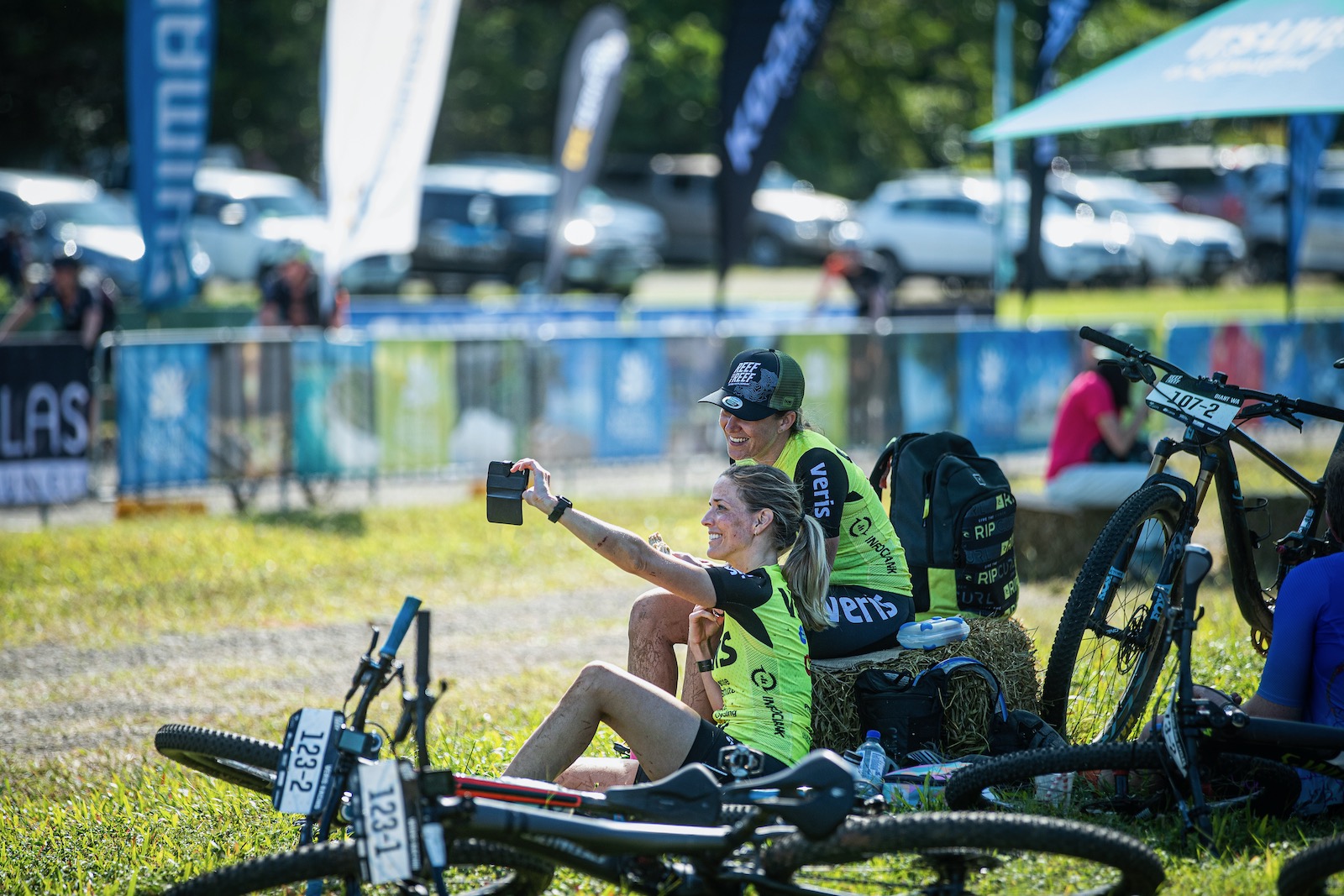
You could also stay back in your original accommodation near Smithfield after Davies Creek, and drive to Mt Molloy for Stage 3. It's only a little over an hour – and no packing up.
So whether you want to stay in one place or two – crack open Google maps and your favourite accommodation booking platform – and see what works best for your crew.
5. Book a hire car
Some bike events don't need a car to get around. Unfortunately, Reef to Reef is not one of them. You can get an airport transfer and pick up a hire car after Stage 1 if you like – you will save a day's hire, but add some faff.
Get onto a booking site for car hire comparison, and lock it in NOW. Most sites have free cancellation. Vroomvroomvroom is a good one, but there are plenty out there. Two people getting something like an i30 will fit two bike bags and a small gear bag (trust me). That'll run about $850 for Thursday to Monday.
You may be able to make something like a Kia Carnivale work for 4 people and bikes, if people pack light and you know a thing or two about tetris. That'll run around $1300 (booked now).
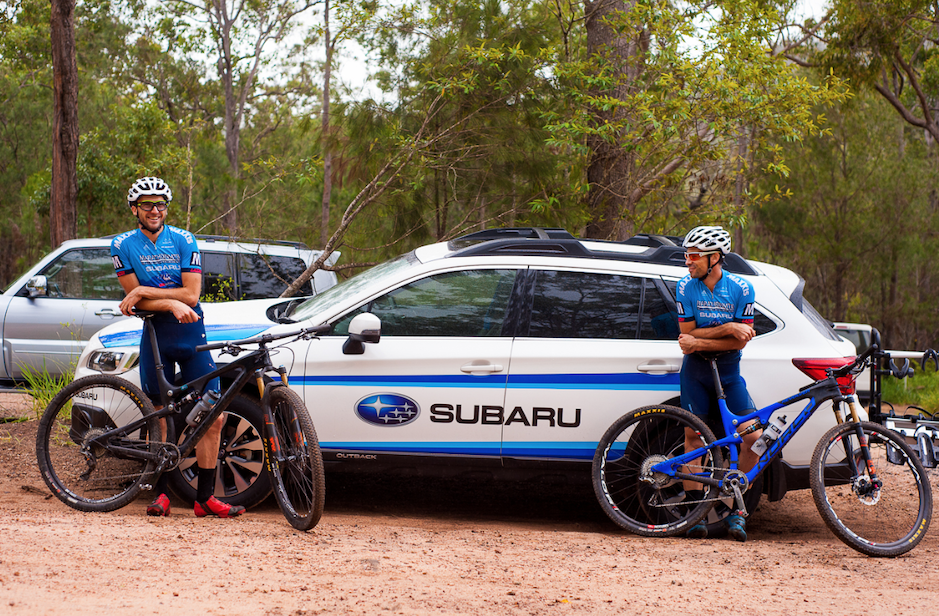
A few things make a difference with this sort of stuff. One is searching a few options. Another is being precise on booking times. And – don't let your mate bring a hard case or cardboard box. They take up too much room – unless you stay in one place (like Palm Cove). Then it's all gravy.
6. But wait – should I stay longer?
Good question.
What do you know about Tropical North Queensland? Do you know about all the places you can ride?
Have you been riding at Atherton MTB Park?
What about visiting Lake Barrine, or cruising the Cassowary Coast? Maybe, you should forget the advice so far, rent a campervan, and tour tropical north Queensland in a camper.
There is a lot to see and do up north. The Atherton plateau has a gin distillery, stunning freshwater lakes, a rail trail, the Atherton MTB Park, cute townships, and of course the Spy and Camera Museum at Herberton.
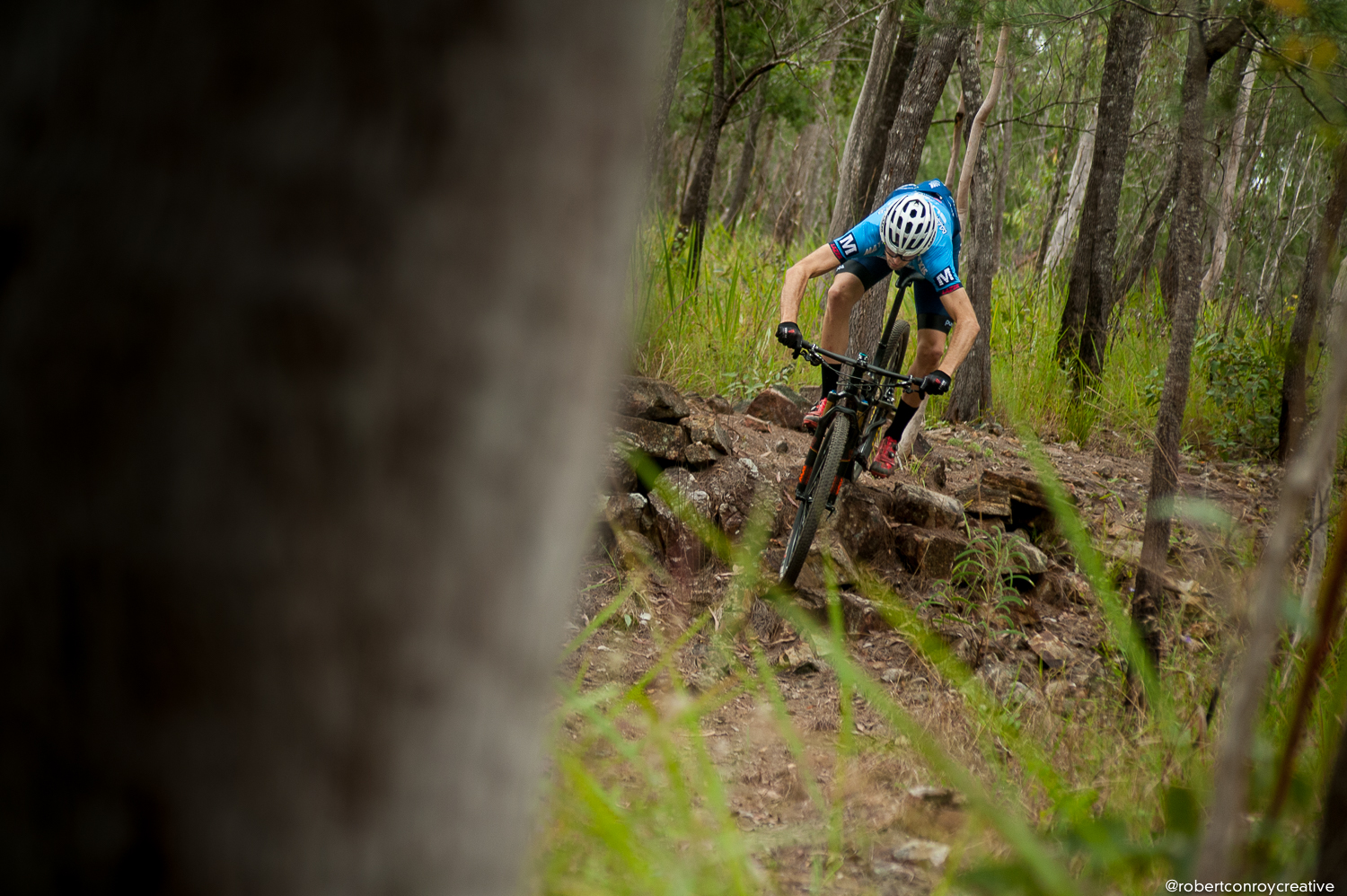
Tropical North Queensland isn't short on stories as well, and with an open agenda you could traipse around, finding the best stories at the front bar of local watering holes. It'd be quite a trip.
For those who like action, don't forget the jetboat trips out of Cairns, reef tours from Port Douglas, and of course Bungy Jumping at Smithfield. And that's just the start.
If you're a bikepacker – maybe the CREB track is the challenge you have been waiting for?
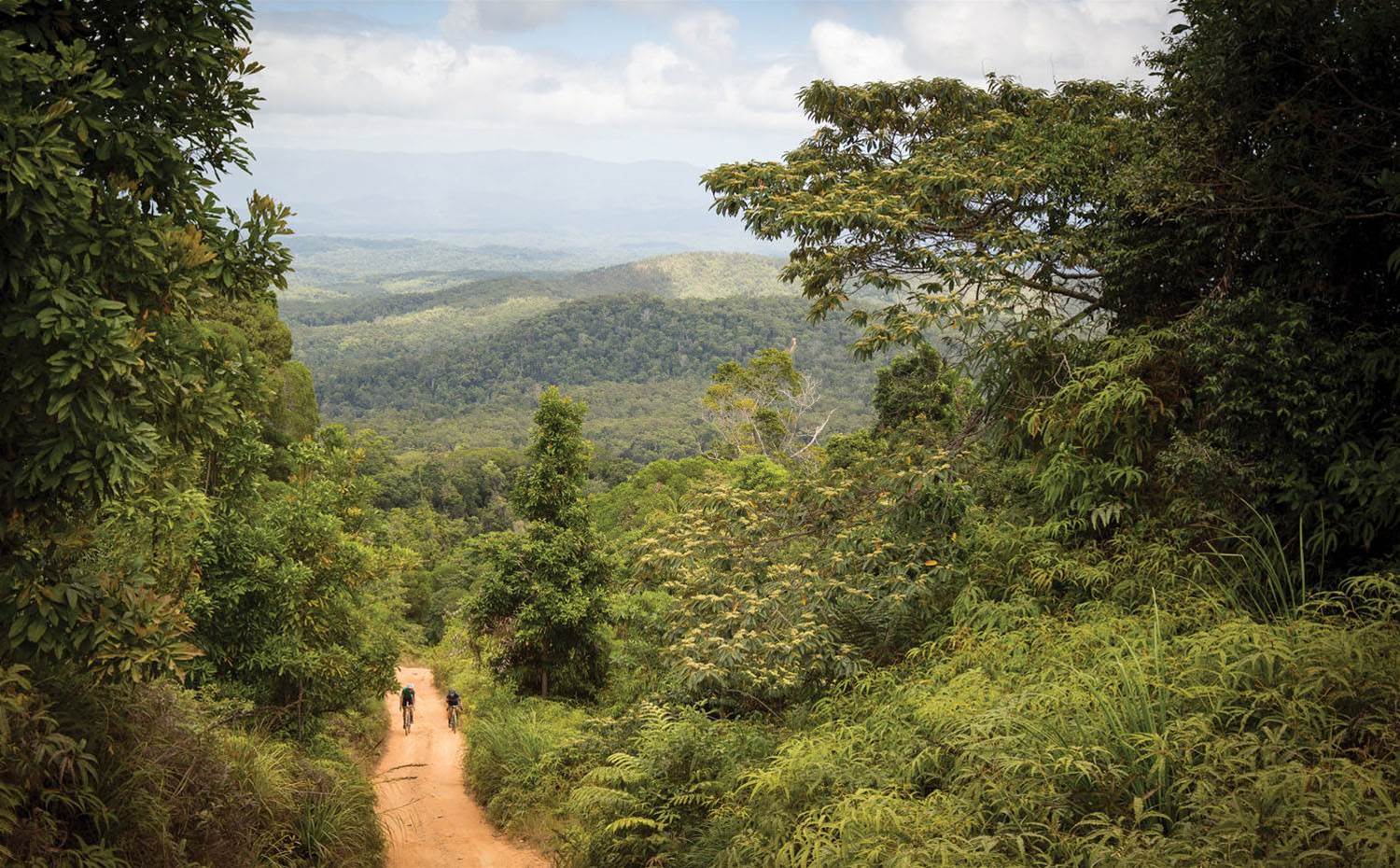
Reef to Reef have a bunch of things you can do while in this tropical playground.
7. So, what bike do I need for Reef to Reef?
You can do Reef to Reef on just about any mountain bike to an extent. It won't be a whole lot of fun on an enduro bike, but a trail bike is fine. Here's what I learnt racing Cape to Cape on a trail bike.
The best bet is a cross-country bike or short travel trail bike though. A hardtail is fine but a 100-140mm travel full suspension bike is perfect! You'll appreciate having something with lock out for the fast bits, and with a wide gear range for the steep bits.
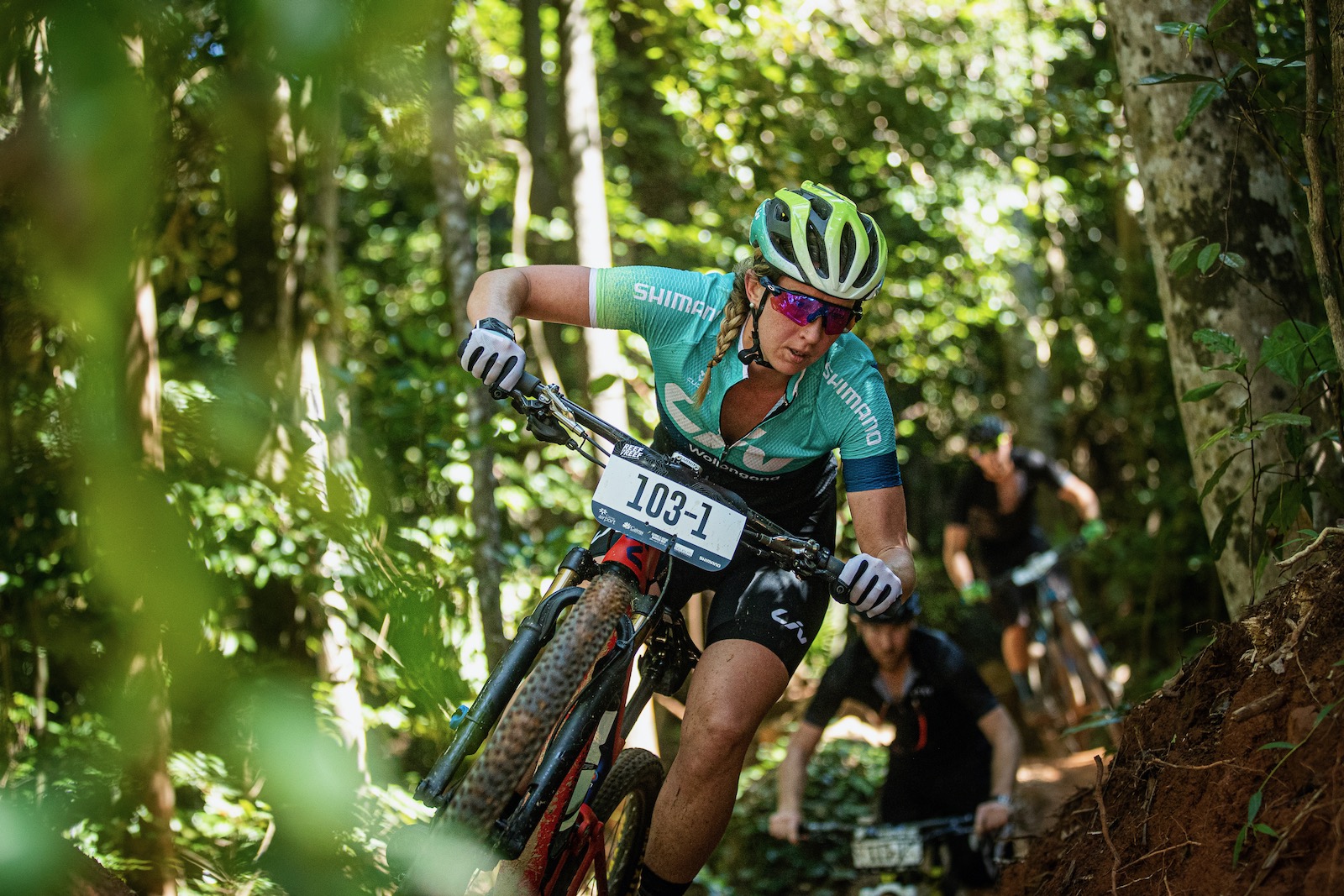
A downcountry bike, whatever they are, would be ideal for many riders who are there to go quick and have some fun. Wider tyres will be great for the variety of conditions, and something like the Pirelli Scorpion 2.4" XC range could be ideal. You want something that rolls fast, but has plenty of edge knobs for grip when you're tipping it into the corners on the trails.
Make a plan on what to carry with you on each stage incase things go wrong.. I recommend a mini pump, multitool, plug kit, quick link, derailleur hanger, spare tube, tyre lever and a sense of humour. A plug kit might make bad day not so tough, both the DynaPlug and Stan's DART work really well.
The rest is up to you. Make sure you're in good enough shape to ride for four days, don't forget to book your leave, and bring a good attitude for a great mountain bike holiday! Entries to Reef to Reef are open now – so don't miss out.
